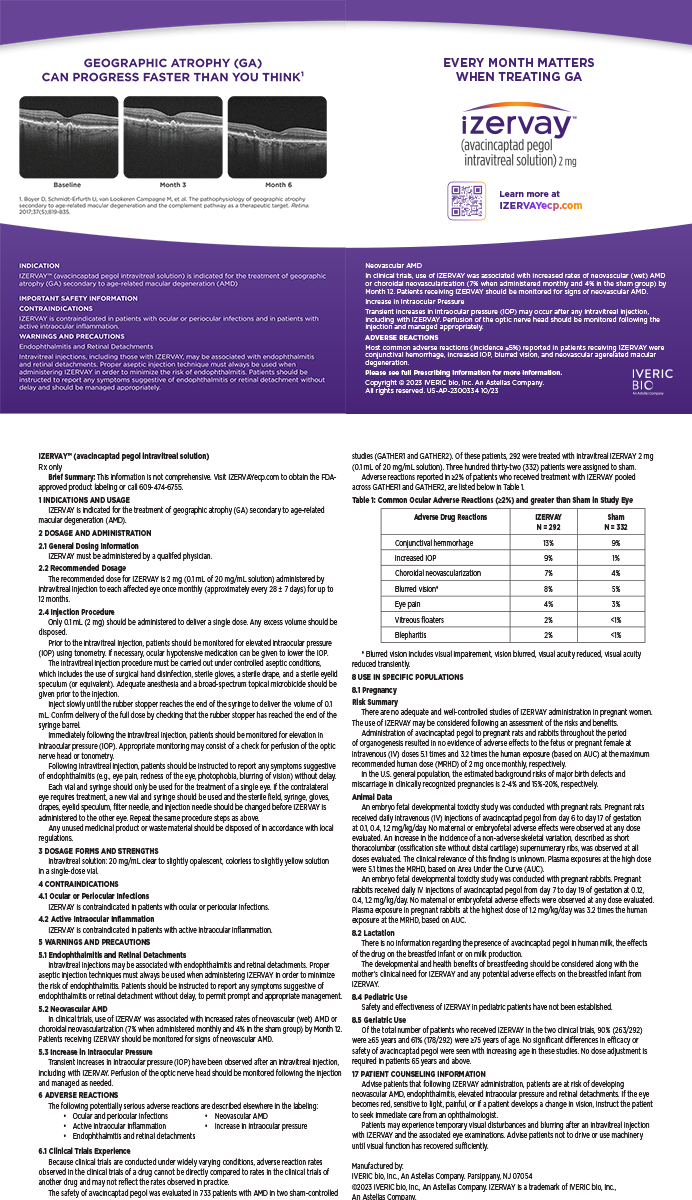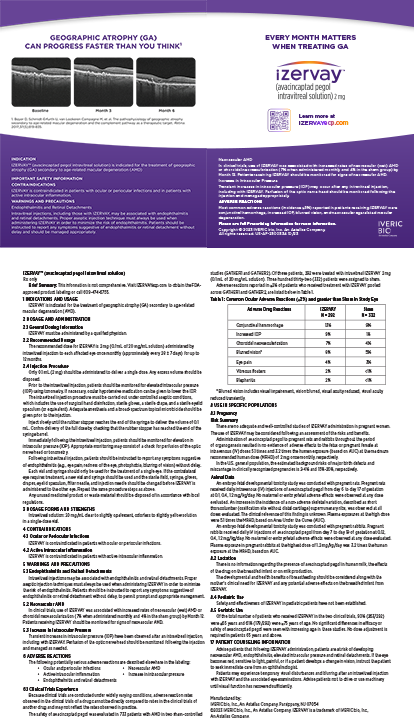Maintaining the ability to drive is paramount to senior citizens wishing to be independent. Although legislators and insurers may view Snellen acuity as a measure of this capability, older adults have their own definitions. Several times a day, patients presenting for a cataract surgery consultation will volunteer that they limit their driving. “I only drive to the store,” “I never drive on the highway,” and “I never drive after dusk” are all too frequently given as indications for cataract surgery. Despite these selfimposed limitations due to their real-world visual dysfunction, patients still may have visual acuities that meet or exceed the minimum requirements for a valid driver's license.
Although Snellen acuity is an inadequate assessment of functional vision, it is used throughout North America and Europe due to how easily it provides a metric for visual acuity. Other measures are now being proposed as better indicators of functional vision, including contrast sensitivity and disability glare testing. Elderly drivers with cataracts are more likely to be involved in motor vehicle accidents.1 This risk likely increases well before the development of a “visually significant” cataract, however, and is related to factors such as contrast sensitivity and disability glare that are not tested as part of a driving fitness examination.
UNDERSTANDING GLARE
The International Commission on Illumination, an International Organization for Standardization body also known by its French acronym CIE, defines four types of glare: dazzling, scotomatic (as from a camera flash), discomfort, and disability.
Light from a glare source such as a car's headlights is partially scattered in the eye, creating a veil of light on top of the image on the retina (this is termed retinal stray light). The glare sensation depends on both the brightness of the glare source and the glare sensitivity of the viewer's eyes.
Disability glare occurs when intraocular retinal stray light reduces visibility and visual performance. This stray light can arise from light scatter in the cornea, lens, and vitreous. Common causes include corneal opacities, cataract, and asteroid hyalosis. Unlike discomfort glare, it cannot be mitigated with sunglasses or glare filters.
Some retinal stray light is present even in young individuals but increases dramatically with age, doubling by age 65 and tripling by 77 years of age.2 In a recent study of 2,422 drivers from five European countries, researchers found that nearly one-third of those aged 75 years and older had disability glare or at least a fourfold increase in stray light levels.2,3
Glare's impact on vision is different from that of decreased visual acuity. In certain circumstances, such as night driving with oncoming headlights and against-the-light face recognition, the light scatter from disability glare has a much stronger effect on the quality of vision.4
All types of cataract increase retinal stray light, and it may be the effects from retinal stray light that patients first notice as their cataracts develop. Older individuals who avoid night driving, for example, have significantly higher stray light values than those who continue to drive at night5; reduced contrast sensitivity is also associated with self-regulation of driving habits.6
Importantly, patients note these effects well before they experience significant deficits in visual acuity. Among 97 subjects with cataract who had maintained a visual acuity above European driving standards, all had reduced contrast sensitivity and increased stray light levels.7 Despite their good visual acuity, more than three-quarters (78%) of the subjects had disability glare that made them unfit to drive, while 31% would be considered unfit to drive on the basis of contrast sensitivity.
CONNECTING THE DOTS
It stands to reason that some visual dysfunctions as described could have a significant impact on driving safety. Owsley and colleagues found that drivers with a history of crash involvement were eight times more likely to have a serious contrast sensitivity deficit in the worse eye (defined as a Pelli-Robson score of ≤ 1.25) than those who were crash free.1 In this study, disability glare was not independently associated with crash involvement.
Other studies, however, have found a relatively strong relationship between glare sensitivity or disability glare and motor vehicle accidents. One-quarter of professional drivers involved in nighttime accidents had increased sensitivity to glare.8-10
Cataract surgery with IOL insertion directly affects the safety of older drivers, because it improves their visual acuity and contrast sensitivity and reduces stray light—all at once. The impact of cataract surgery on disability glare is particularly impressive. Routine cataract surgery reduces retinal stray light levels by a factor of 3.24, nearly double the improvement in visual acuity.11 In fact, stray light levels in pseudophakes are better than in individuals with noncataractous eyes, leading researchers to conclude that lens extraction potentially reverses the strong age-related increase in stray light value quite independently of visual acuity.2
Studies have shown that cataract surgery reduces the rate of motor vehicle crash involvement by half 12,13 and markedly improves driving performance.14 Several authors have suggested that earlier cataract surgery would improve public safety and save money, despite the additional costs of more surgical procedures.12,15
If disability glare is implicated in problems with visual function and traffic accidents—and ophthalmologists know how to reduce it with cataract surgery— why is there not a greater push to test for and correct disability glare? Until recently, we have not had a reliable way of measuring disability glare or retinal stray light. In my estimation, conventional glare tests involve many confounding variables (eg, the brightness and distance of the light source) and confuse glare with other factors by involving a contrast or visual acuity chart.
Some relatively new devices attempt to directly measure intraocular stray light. Chief among these is the commercially available C-Quant stray light meter (Oculus Optikgeräte GmbH), which is better able to discriminate cataract than conventional glare tests.16 I have found the C-Quant device to be very effective for research, but it still is not an easy test to administer or for the patients to undergo.
CONCLUSION
Maintaining the ability to drive can have a profound impact on people's independence, quality of life, mood, social participation, and even access to health care.17 In North America and elsewhere, driving standards are largely based on visual acuity and, to some extent, visual field, but they fail to take into account other important measures of visual function.
Currently, Medicare and private insurers require that cataracts be visually significant prior to covering cataract surgery. Using Snellen acuity, a test done with high-contrast letters on a lit background in a darkened room as a measure of visual significance misses the mark. The evidence would suggest that cataracts have a significant impact on contrast sensitivity and disability glare well before they affect visual acuity and that earlier extraction and replacement with an IOL could improve driving safety and enable patients to maintain their driving privileges.
George H. H. Beiko, BM, BCH, FRCSC, is a lecturer at the University of Toronto and an assistant clinical professor at McMaster University in St. Catherines, Ontario, Canada. He acknowledged no financial interest in the product or company mentioned herein. Dr. Beiko may be reached at or (905) 687-8322; georgebeiko@hotmail.com.
- Owsley C, Stalvey BT, Wells J, et al. Visual risk factors for crash involvement in older drivers with cataract. Arch Ophthalmol. 2001;119(6):881-887.
- van den Berg TJTP, van Rijn LJ, Michael R, et al. Straylight effects with aging and lens extraction. Am J Ophthalmol. 2007;144(3):358-363.
- van den Berg TJTP, van Rijn LJ. Relevance of glare sensitivity and impairment of visual function among European drivers. http://ec.europa.eu/transport/roadsafety_library/publications/glare_rapport2004_33_ wo_articles.pdf. Accessed July 29, 2013.
- van den Berg TJTP, Franssen L, Coppens JE. Ocular media clarity and straylight. In: Dartt DA, ed. Encyclopedia of the Eye. vol 3. Oxford, UK: Academic Press; 2010:173-183.
- Michael R, Barraquer RI, Rodriguez J, et al. Intraocular straylight screening in medical testing centres for driver license holders in Spain. J Optom. 2010;3(2):107-114.
- Sandlin D, McGwin G, Owsley C. Association between vision impairment and driving exposure in older adults aged 70 years and over: a population-based examination. Acta Ophthalmol. 2013. doi: 10.1111/ aos.12050.
- Bal T, Coeckelbergh T, Van Looveren J, et al. Influence of cataract morphology on straylight and contrast sensitivity and its relevance to fitness to drive. Ophthalmologica. 2011;225(2):105-111.
- Rubin GS, NG ESW, Brandeen-Roche K, et al, for the SEE Project Team. A prospective population based study of the role of visual impairment in motor vehicle crashes among older drivers: The SEE Study. Invest Ophthalmol Vis Sci. 2007;48:1483-1491.
- von Hebenstreit B. Visual acuity and traffic accidents [in German]. Klin Monbl Augenheilkd. 1984;185(2): 86-90.
- Lachenmayr B, Berger J, Buser A, Keller O. Reduced visual capacity increases the risk of accidents in street traffic [in German]. Ophthalmologe. 1998:95(1):44-46.
- van den Berg TJTP. Straylight pre- and post routine cataract surgery. Paper presented at: The European Society of Cataract and Refractive Surgeons Annual Meeting; September 12-16, 2009; Barcelona, Spain.
- Mennemeyer ST, Owsley C, McGwin G Jr. Reducing older driver motor vehicle collisions via earlier cataract surgery [published online ahead of print January 11,2013]. Accid Anal Prev. doi: 10.1016/j.aap.2013.01.002.
- Owsley C, McGwin G Jr, Sloane M, et al. Impact of cataract surgery on motor vehicle crash involvement by older adults. JAMA. 2002;288(7):841-289.
- Wood JM, Carberry TP. Bilateral cataract surgery and driving performance. Br J Ophthalmol. 2006;90(10):1277-1280.
- Meuleners LB, Hendrie D, Lee AH, et al. The effectiveness of cataract surgery in reducing motor vehicle crashes: a whole population study using linked data. Ophthalmic Epidemiol. 2012;19(1):23-28.
- van Rijn LJ, Nischler C, Gamer D, et al. Measurement of stray light and glare: comparison of Nykotest, Mesotest, stray light meter, and computer implemented stray light meter. Br J Ophthalmol. 2005;89(3):345-351.
- Owsley C, McGwin G Jr. Vision and driving. Vision Res. 2010;50(23):2348-2361.


